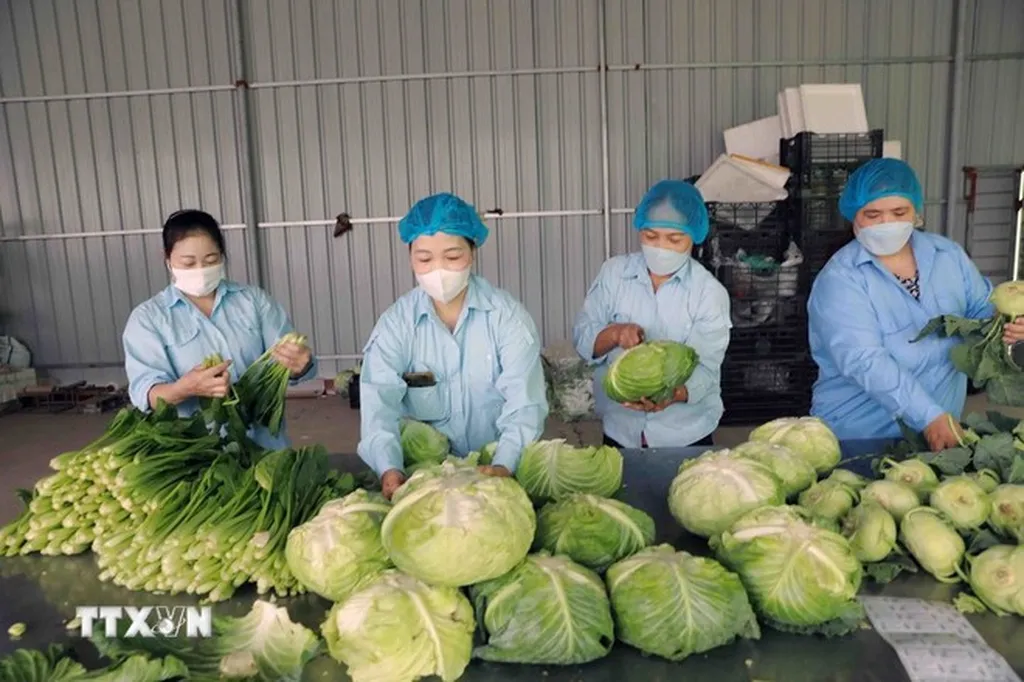Hanoi is quietly transforming its agricultural sector by embedding digital technology into every stage of production—from seed to shelf. The city’s push to integrate artificial intelligence, blockchain, remote sensing, and eGAP (electronic Good Agricultural Practices) solutions marks a deliberate shift toward transparency, efficiency, and sustainability in farming. For a sector long characterised by small-scale, labour-intensive practices, this transition could redefine how food is grown, tracked, and sold in Vietnam’s capital.
At the heart of this change are cooperatives and farms adopting precision agriculture to gain tighter control over production. The Chuc Son Clean Fruit and Vegetable Cooperative in Chuong My ward exemplifies this shift. Across its 18 hectares—12.8 of which meet VietGAP standards and 5 certified under the stricter GlobalGAP—the cooperative uses a network of sensors, automated irrigation, and real-time weather monitoring to fine-tune growing conditions. Data on humidity, temperature, and rainfall feed into FACEFARM software, allowing farmers to adjust irrigation and fertilisation with precision. Each vegetable bed carries a QR code, linking consumers directly to its cultivation history—a simple but powerful tool for building trust in an era where food safety concerns linger.
The results speak for themselves. By digitising production, the cooperative supplies around three tonnes of vegetables daily to supermarkets and institutional kitchens, generating annual revenues between 10 and 13 billion VND (roughly 380,000 to 493,000 USD). This isn’t just a win for profitability; it’s a model for how technology can bridge the gap between rural producers and urban markets, reducing waste and improving margins.
Elsewhere, Me Linh F-Farm has turned to Israeli-designed Industry 4.0 technology to revolutionise orchid cultivation. Automated greenhouses regulate temperature, humidity, and lighting, while drip irrigation systems deliver water and nutrients with minimal waste. For a crop as delicate as orchids—where even slight environmental fluctuations can stunt growth—this level of control is a game-changer. The farm now maintains over 50,000 plants with fewer labour demands and less vulnerability to extreme weather, proving that high-tech solutions can make niche agriculture more resilient.
Hanoi’s broader strategy extends beyond individual success stories. According to the municipal Department of Agriculture and Environment, the city now hosts 406 high-tech agricultural models, spanning crops, livestock, and aquaculture. These initiatives align with Programme No. 07-CTr/TU, a 2021 policy aimed at embedding science and innovation into the capital’s agricultural sector by 2025. Yet despite this progress, challenges remain. Small, fragmented landholdings make it difficult to scale technology adoption, while the upfront costs of digital tools and infrastructure deter many farmers. Inconsistent policy support further complicates investment, leaving some stages of the supply chain—like post-harvest processing and logistics—underserved by innovation.
To address these hurdles, Hanoi is rolling out Plan No. 73/KH-UBND, a roadmap to develop high-tech agriculture through 2030. The plan prioritises digital transformation, with a focus on AI and IoT (Internet of Things) to modernise production. Ta Van Tuong, Deputy Director of the Department of Agriculture and Environment, emphasised that the next phase will involve building a centralised database for crops, livestock, and aquatic products. This system would inform urban planning, guide the creation of large-scale safe production zones, and support a shift toward circular agriculture—where waste is minimised, and resources are reused.
The implications of Hanoi’s digital agricultural push extend beyond the city’s borders. By demonstrating how technology can enhance traceability, reduce costs, and open new markets, the capital is setting a precedent for Vietnam’s broader rural economy. For farmers, digital tools offer a way to move from reactive to predictive farming, mitigating risks like climate variability and price fluctuations. For consumers, blockchain-backed supply chains and QR-coded produce provide unprecedented visibility into where their food comes from. And for policymakers, the experiment in Hanoi could offer a blueprint for balancing tradition with innovation—a necessary evolution as Vietnam’s agricultural sector faces pressure to feed a growing, urbanising population while adapting to a changing climate.
Yet the transition won’t be seamless. Success hinges on more than just technology; it requires training farmers to use new systems, ensuring affordable access to digital tools, and fostering collaboration between cooperatives, tech providers, and government agencies. If Hanoi can navigate these complexities, its approach could redefine not just how the city farms, but how Vietnam’s agricultural heartlands engage with the digital future.

